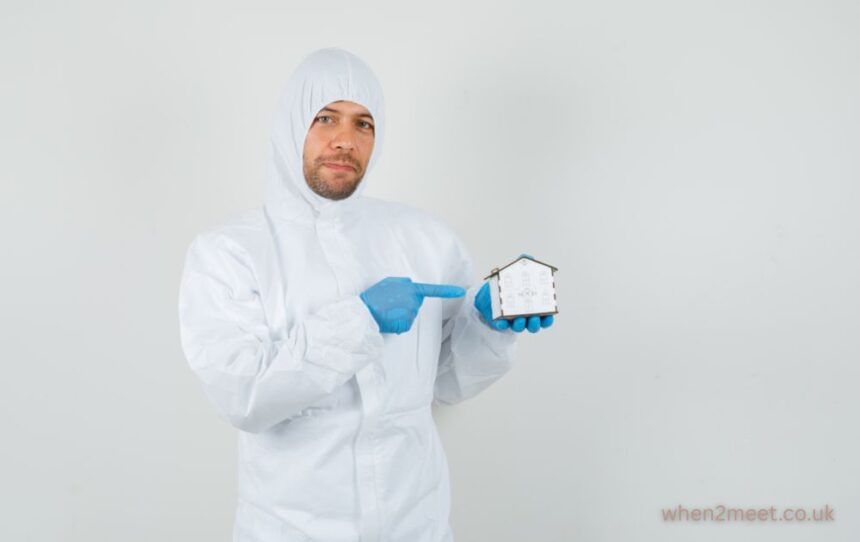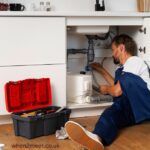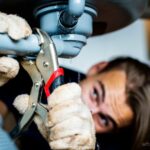When most homeowners think about mold, the first instinct is often to clean it up as quickly as possible. The truth is that rushing into removal without understanding the extent of the problem can leave hidden dangers behind. Mold thrives in dark, damp, and hard-to-reach places, which means surface cleaning rarely solves the root issue. That is why a professional inspection before remediation is so important. It helps uncover the hidden sources of growth, determines the severity of the contamination, and guides a safe and lasting solution. Acting early protects both your property and your health, and with quick-dry flood services of san diego, you can address these problems efficiently and with confidence.
The Overlooked Dangers of Hidden Mold
You might notice a dark patch on the wall or a musty smell in the basement and think it is just a small annoyance. In reality, mold often spreads far beyond what you can see. It can grow inside wall cavities, behind tiles, under flooring, and even within your HVAC system. Left unchecked, this growth weakens building materials, damages drywall, and can even compromise the structural integrity of your home.
The health effects are just as concerning. Mold releases spores that can aggravate allergies, worsen asthma, and cause persistent respiratory issues. For sensitive individuals, prolonged exposure can lead to chronic health problems. The hidden nature of mold makes it especially dangerous because by the time symptoms appear, the contamination is often much worse than expected.
Why an Inspection Always Comes First
Jumping straight to remediation may seem like a way to save time and money, but it often has the opposite effect. Without a full understanding of the infestation, removal efforts can be incomplete, allowing mold to return quickly. Professional inspectors are trained to locate both visible and concealed mold, using specialized tools such as thermal imaging cameras and moisture meters. These devices help trace leaks, humidity pockets, and condensation areas that might not be obvious.
A proper inspection also determines whether the mold is confined to one room or has spread through multiple areas of the home. This step is crucial for planning an effective remediation strategy. The report from the inspection will also outline the potential health risks and the urgency of the situation, giving homeowners a clear picture of what needs to be done. Once the inspection is complete, professionals can identify the type of mold present, which further refines the treatment plan.
The Role of Mold Testing in the Process
Testing goes hand in hand with inspection. While an inspector can point out the presence of mold, testing provides detailed information about what you are dealing with. Different types of mold carry different risks, and some produce mycotoxins that are particularly hazardous to human health. Testing involves collecting air and surface samples, which are then analyzed in a laboratory to confirm the species and spore levels.
This step matters because it tells you not only if mold is present but also how much of it is circulating in your indoor air. Elevated spore counts can explain why residents experience allergic reactions even when mold is not visibly apparent. Testing also creates a baseline that can be compared after remediation to confirm that the problem has been successfully resolved.
From Inspection to Action: How Remediation Works
Once the inspection and testing are completed, the remediation process can begin. Remediation is not just about scrubbing away stains; it involves containment, removal, cleaning, and prevention. Professionals first seal off affected areas to prevent spores from spreading during cleanup. Then, depending on the severity, materials like drywall or insulation may need to be removed entirely. Industrial-grade air scrubbers and HEPA vacuums are used to clear spores from the environment.
The final step is addressing the source of the moisture. Without fixing leaks, improving ventilation, or controlling humidity, mold can easily return. That is why inspection reports that point out the causes are invaluable. They guide the repairs that prevent future outbreaks, giving homeowners peace of mind that the problem has been solved at its root.
The Value of Prevention
While inspection and remediation are essential when mold is already present, prevention is always the best approach. Regularly monitoring for leaks, keeping indoor humidity under control, and ensuring good airflow are practical measures any homeowner can take. Still, nothing replaces the expertise of professionals who know how to recognize early warning signs. Scheduling inspections periodically can catch issues before they spiral into costly and stressful repairs.
Another benefit of professional oversight is documentation. Inspection reports provide a detailed record of the property’s condition, which can be valuable for resale, insurance claims, or even routine maintenance planning. This record shows that the property has been properly cared for and that any mold issues were addressed responsibly.
Why Homeowners Should Not Wait
Delaying a mold inspection might save you money today, but it will almost certainly cost you more tomorrow. Small patches can quickly spread into entire rooms, and health issues often worsen over time. By acting at the first sign of a problem, you minimize damage, reduce exposure, and save yourself from larger expenses.
The combination of inspection, testing, and remediation provides a full-circle solution that keeps both your property and your family safe. With the right professionals guiding the process, you can feel confident that your home will not only be restored but also protected from future mold problems.
Mold is not something to take lightly, and it is rarely a problem that disappears on its own. A professional inspection before remediation ensures that nothing is overlooked, from hidden leaks to airborne spores. By pinpointing the source, defining the scope, and guiding the cleanup, this first step makes all the difference in achieving lasting results. For homeowners seeking peace of mind and reliable solutions, the process begins with a thorough inspection and continues through careful remediation and prevention.
Read more interesting topic: cleaning services.



